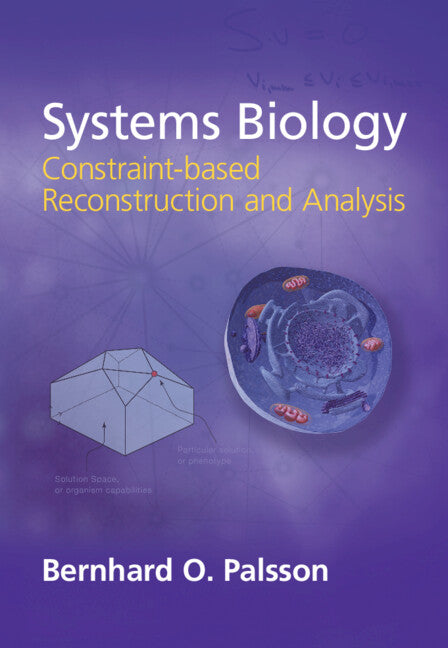Freshly Printed - allow 8 days lead
Couldn't load pickup availability
Systems Biology
Constraint-based Reconstruction and Analysis
The first comprehensive single-authored textbook on genome-scale models and the bottom-up approach to systems biology.
Bernhard Ø. Palsson (Author)
9781107038851, Cambridge University Press
Hardback, published 26 January 2015
550 pages, 27 b/w illus. 244 colour illus. 45 tables
25.5 x 18.2 x 2.8 cm, 1.27 kg
'[This textbook] offers a truly authoritative treatment of genome-scale systems biology modelling. [It] covers all aspects of this rapidly growing field from theory to basic and applied uses, also detailing open challenges with an emphasis on the multitude of constraint-based approaches by which phenotypic behavior can be inferred from biochemical wiring diagrams. The book is generously illustrated by figures and despite its great depth and breadth, it remains readily accessible … researchers [will find it] a go-to guide for many years to come.' Balázs Papp, Biological Research Centre, Hungarian Academy of Sciences
Recent technological advances have enabled comprehensive determination of the molecular composition of living cells. The chemical interactions between many of these molecules are known, giving rise to genome-scale reconstructed biochemical reaction networks underlying cellular functions. Mathematical descriptions of the totality of these chemical interactions lead to genome-scale models that allow the computation of physiological functions. Reflecting these recent developments, this textbook explains how such quantitative and computable genotype-phenotype relationships are built using a genome-wide basis of information about the gene portfolio of a target organism. It describes how biological knowledge is assembled to reconstruct biochemical reaction networks, the formulation of computational models of biological functions, and how these models can be used to address key biological questions and enable predictive biology. Developed through extensive classroom use, the book is designed to provide students with a solid conceptual framework and an invaluable set of modeling tools and computational approaches.
Preface
1. Introduction
Part I. Network Reconstruction: 2. Network reconstruction: the concept
3. Network reconstruction: the process
4. Metabolism in Escherichia coli
5. Prokaryotes
6. Eukaryotes
7. Biochemical reaction networks
8. Metastructures of genomes
Part II. Mathematical Properties of Reconstructed Networks: 9. The stoichiometric matrix
10. Simple topological network properties
11. Fundamental network properties
12. Pathways
13. Use of pathway vectors
14. Randomized sampling
Part III. Determining the Phenotypic Potential of Reconstructed Networks: 15. Dual causality
16. Functional states
17. Constraints
18. Optimization
19. Determining capabilities
20. Equivalent states
21. Distal causation
Part IV. Basic and Applied Uses: 22. Environmental parameters
23. Genetic parameters
24. Analysis of omic data
25. Model driven discovery
26. Adaptive laboratory evolution
27. Model driven design
Part V. Conceptual Foundations: 28. Teaching systems biology
29. Epilogue
References
Index.
Subject Areas: Chemical engineering [TDCB], Industrial chemistry & manufacturing technologies [TD], Biotechnology [TCB], Biochemical engineering [TC], Technology, engineering, agriculture [T], Biochemistry [PSB], Biology, life sciences [PS], Mathematics & science [P], Biomedical engineering [MQW], Medicine [M]


